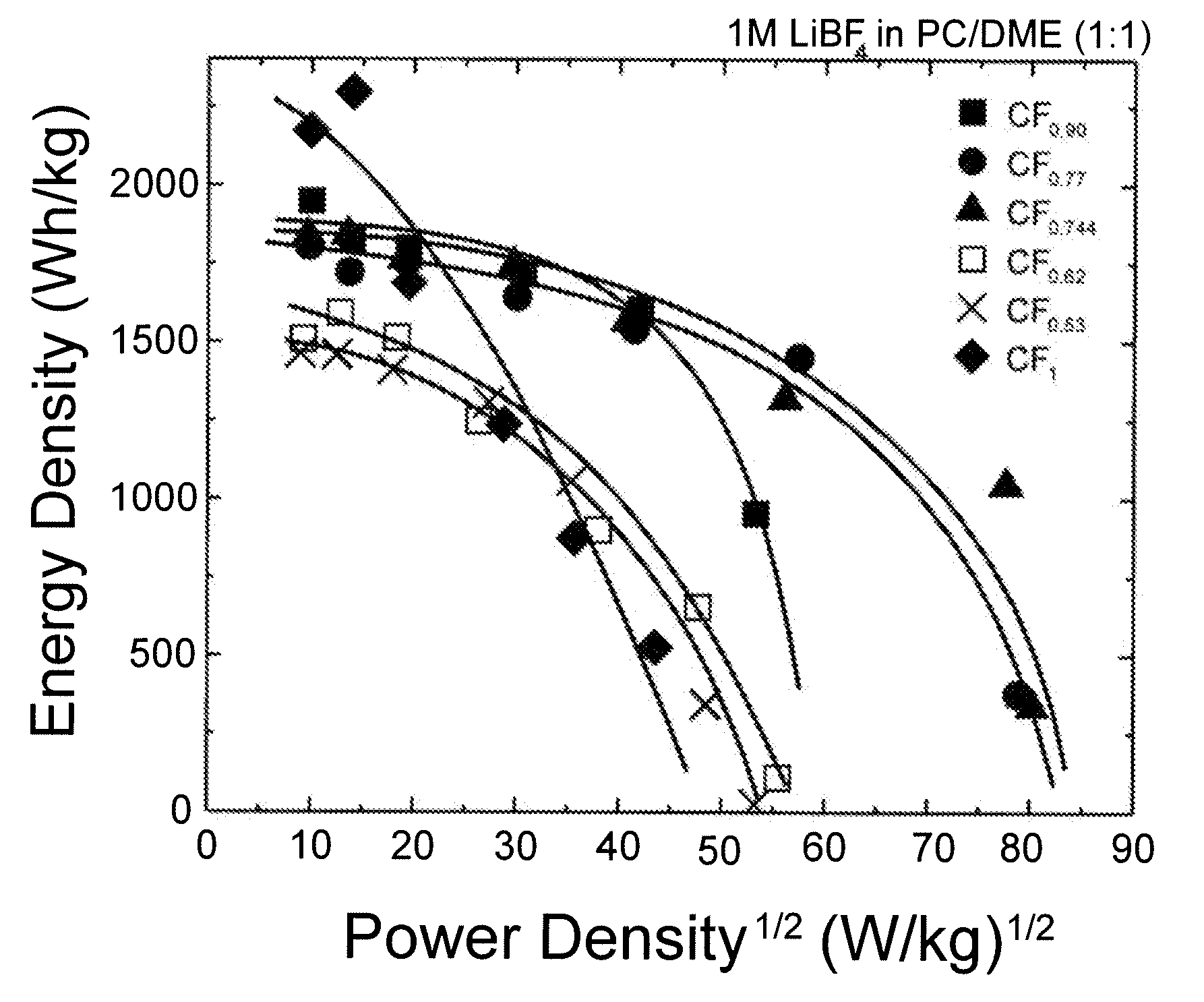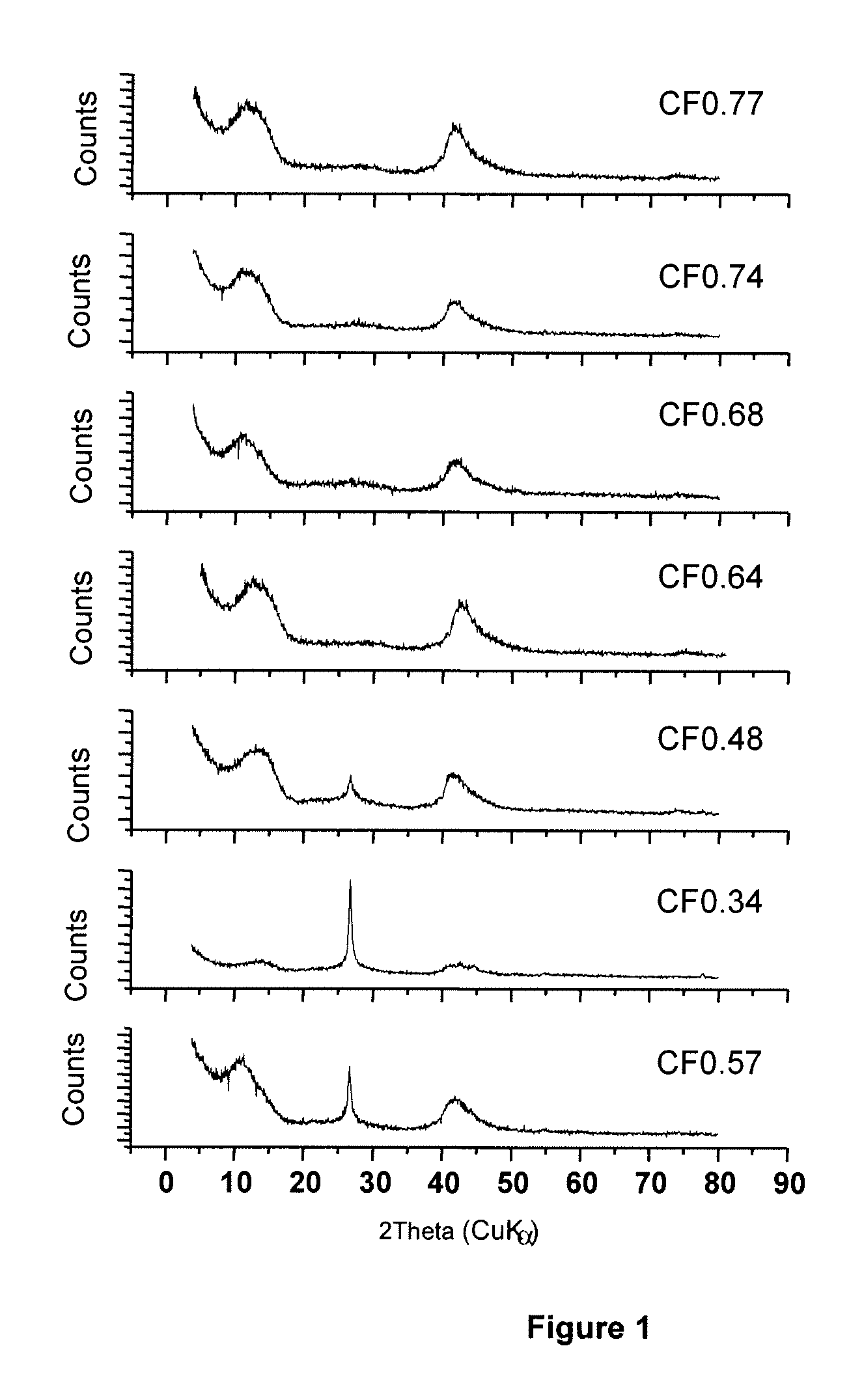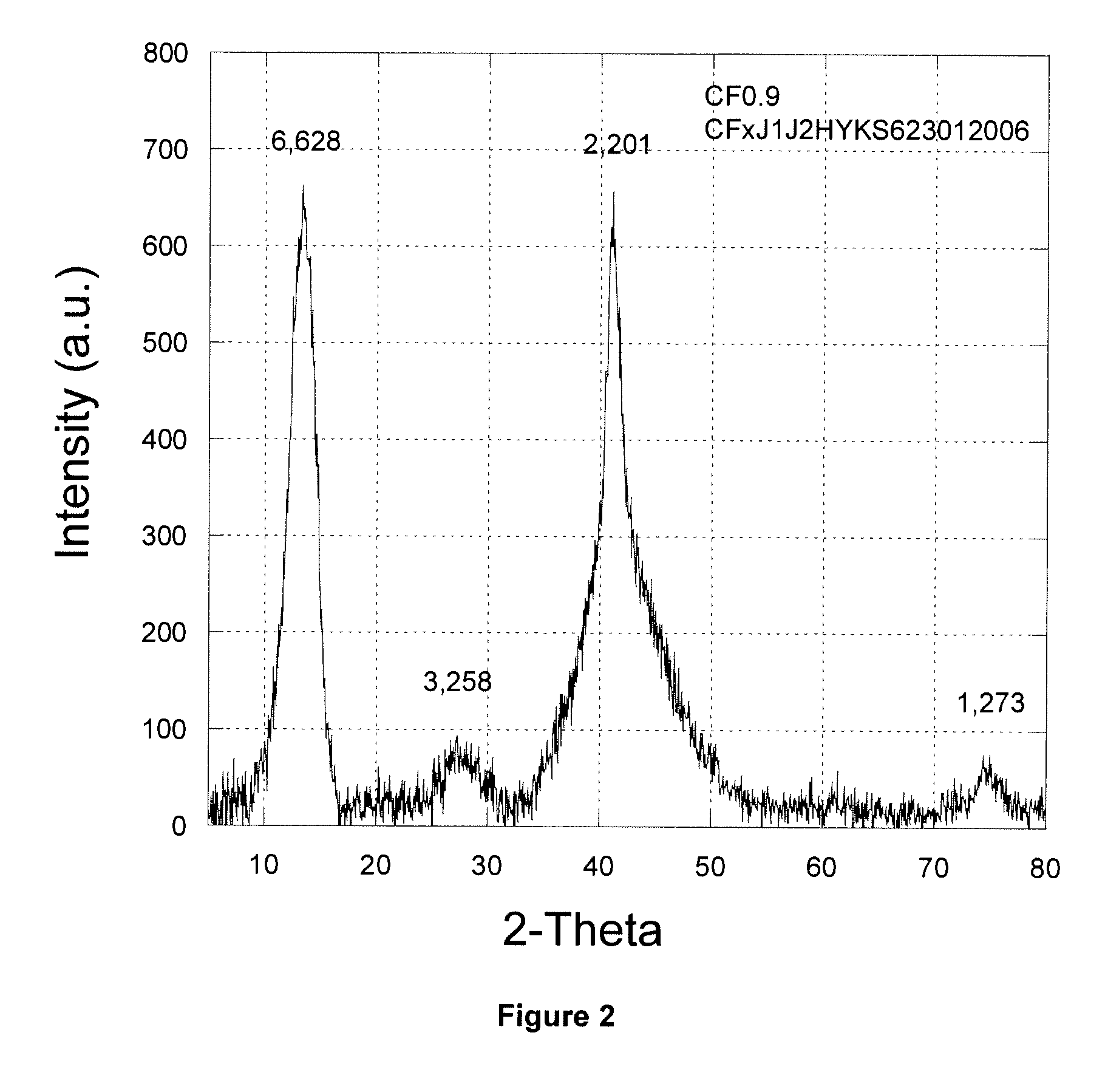Electrochemistry of carbon subfluorides
a technology of carbon subfluoride and electrochemistry, which is applied in the field of fluorinated carbon materials, can solve the problems of limited discharge rate, observed discharge rate limitation, and thicker cathode, and achieves enhanced cathode performance, high discharge rate, and good battery performan
- Summary
- Abstract
- Description
- Claims
- Application Information
AI Technical Summary
Benefits of technology
Problems solved by technology
Method used
Image
Examples
example 1
Synthesis of Subfluorinated Graphite
[0106] Graphite ((10 to 30 grams, quantity, M, of Natural Graphite of Madagascar 7.5 μm or Artificial Graphite 15-20 μm distributed on a nickel plate, 0.2 g / cm2) was placed into the nickel reactor (4 litre), and dried under vacuum at room temperature during 2 hours. Then, fluorine gas (99.90% purity) was introduced up to 1 atmosphere and after, using open system reactor, fluorine was flowed with controlled rate (FL g / hour). Afterward, the temperature was regularly increased (1° C. / min) to the final temperature T (° C.) and was maintained during H hours. At the end of the reaction, the furnace was cooled to room temperature. Next, the excess of fluorine was evacuated under dry nitrogen flow during 3 hours. (Note: F / C molar ratios of the subfluorinated graphites were measured by the weight uptake method.)
[0107] Synthesis of CF0.63
Graphite mass M=30 g
Fluorine flow rate FL=2 g / hour
Reaction time H=17 hours
Reaction temperature T=390° C.
[0108]...
example 2
Characterization of Subfluorinated Graphites
[0114]FIG. 1 shows X-ray diffraction spectra for a subfluorinated graphite materials with range of F / C ratios. The spectra show peaks characteristic of a fluorographite matrix at 2θ between approximately 10 and 15 degrees and between approximately 40 and 45 degrees. A peak at 2θ=26.3, which is the position characteristic of the (002) graphite peak, is clearly observed for CF0.34, CF0.48 and CF0.57. The X-ray diffraction (XRD) powder patterns were obtained using a diffractometer with Cu(Kα) radiation (λ=1.5406 Å). The spectra plot intensity (counts) vs. 2θ.
[0115]FIG. 2 shows an enlarged view of an X-ray diffraction spectrum for a subfluorinated graphite material with an F / C ratio of 0.9. The spectrum shows peaks characteristic of a fluorographite matrix at 2θ of approximately 13 degrees (002) and approximately 41 degrees (100). Additional peaks are located at 2θ of approximately 28 degrees (004) and 75 degrees (110). The labels above the ...
example 3
Electrochemical Properties of Subfluorinated Graphite
[0119] For the electrochemical tests, the positive electrodes were composed of subfluorinated carbonaceous material, a conductive material and a binder. The positive electrode was then mounted in a two electrode cell where the electrolyte was composed of a 1 mol.L−1 solution of LiBF4 dissolved in propylene carbonate (PC) and dimethyl ether (DME). A microporous polyethylene or polypropylene film containing the electrolyte was sandwiched between the graphite fluoride electrode and a lithium metal foil.
[0120]FIG. 6 shows a Ragone plot of energy density versus the square root of power density. Subfluorinated graphites CF0.90, CF0.77 and CF0.744 have significantly higher energy densities than CF for power densities greater than 625 W / kg.
[0121]FIGS. 7-10 show discharge profiles for subfluorinated graphites CF0.9, CF0.77, CF0.744, and CF0.647, respectively. The electrode thicknesses were approximately 80 microns, 40 microns, 40 micron...
PUM
| Property | Measurement | Unit |
|---|---|---|
| temperature | aaaaa | aaaaa |
| temperature | aaaaa | aaaaa |
| temperature | aaaaa | aaaaa |
Abstract
Description
Claims
Application Information
 Login to View More
Login to View More - R&D
- Intellectual Property
- Life Sciences
- Materials
- Tech Scout
- Unparalleled Data Quality
- Higher Quality Content
- 60% Fewer Hallucinations
Browse by: Latest US Patents, China's latest patents, Technical Efficacy Thesaurus, Application Domain, Technology Topic, Popular Technical Reports.
© 2025 PatSnap. All rights reserved.Legal|Privacy policy|Modern Slavery Act Transparency Statement|Sitemap|About US| Contact US: help@patsnap.com



